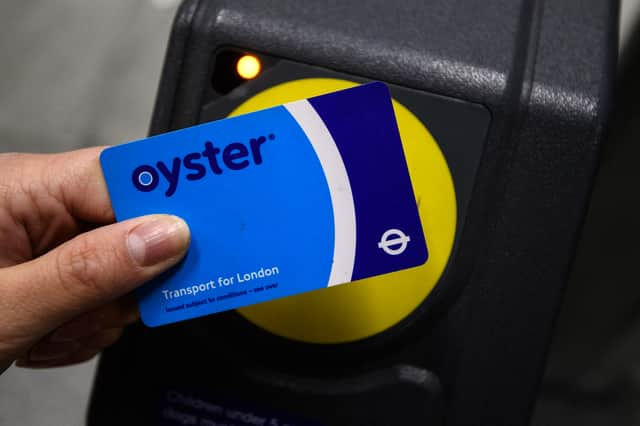London Underground: Half a Billion Pounds Left on Unused Oyster Cards


New data has revealed that Londoners have racked up a total of over £550 million in unspent Oyster card credit.
According to Transport for London, since the exponential growth of contactless payments, there are over 82 million Oyster cards which haven’t been used in at least a year.
Advertisement
Hide AdAdvertisement
Hide AdThis comes as figures show that there are now three times as many contactless pay-as-you-go bank card users as Oyster card faithfuls in the capital.
Decline of Oyster Card
In the first decade after its launch in 2003, the Oyster card was incredibly popular with commuters especially after it was accepted for travel in Greater London in 2010.
But since pay-as.you go contactless payments were introduced on London buses in 2012 and on tube and rail services in 2014, the Oyster card began to see its demise.
At present there are only 5.7 million Oyster cards actively being used at the moment.
Advertisement
Hide AdAdvertisement
Hide AdTfl’s announcement, earlier this year, stating that commuters could no longer top up their card at ticket office windows at rail or overground stations, didn’t help the situation either.
Still Those Who Require Oyster Card
However Mike Tuckett, Head of Customer Payments at Tfl, thinks that Oyster cards will remain a part of London for the foreseeable future.
“Using pay as you go with contactless or Oyster has made travelling by public transport quick, convenient and accessible,” he said.
“Touching in and out reduces the need to queue or buy tickets in stations and ensures that customers only pay for the journeys they make.
Advertisement
Hide AdAdvertisement
Hide Ad“Making ticketing as convenient as possible helps remove the barriers that can stop people choosing public transport.
“We saw a large switch from customers buying paper tickets to using smartcards when the Oyster card was introduced in 2003 and, since 2012 when pay as you go with contactless was launched, we have seen customers move from Oyster to contactless when it makes sense to them.
“More than half of all Tube journeys across London are made with a contactless card – up from around 30 per cent in 2018.
“Around a quarter of contactless journeys are now made using a mobile device or smartwatch rather than a bank card – showing how the market is adapting to this new convenient technology.
Advertisement
Hide AdAdvertisement
Hide Ad“Regardless of the popularity of contactless, there will long be those who will require an Oyster card to travel (such as children) and we expect Oyster cards to remain a part of London for the foreseeable future.”
Tfl are committed to making Oyster cards the cheapest travel option by announcing a payment cap on weekly travelcard limits by the end of the year. This system is already in place for contactless users.
The transport body also says that Oyster cards provide a way for Freedom Pass holders, those aged 60 and over, to receive free travel, while Zip cards provide free and discounted travel for those aged under 18.
Comment Guidelines
National World encourages reader discussion on our stories. User feedback, insights and back-and-forth exchanges add a rich layer of context to reporting. Please review our Community Guidelines before commenting.